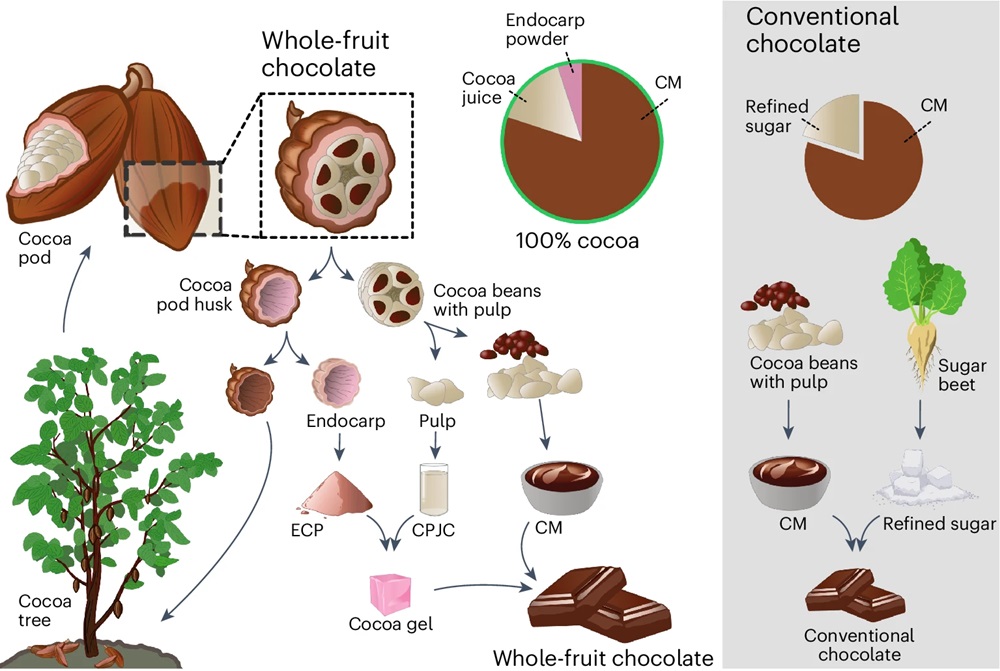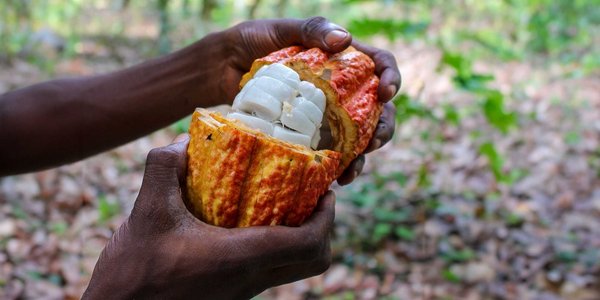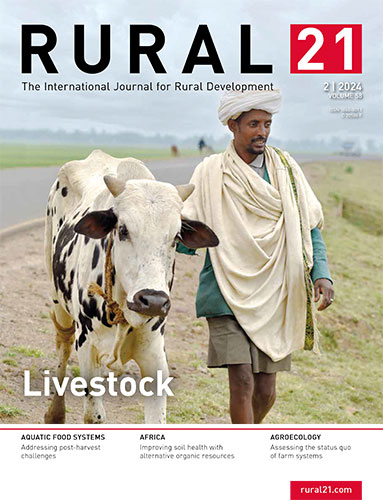Scientific World
Chocolate that harnesses the full potential of the cocoa fruit
For many people, chocolate is a sweet delight. Its main components are cocoa mass and cocoa butter, which are extracted from the cocoa fruit. What is less known, however, is that the cocoa fruit contains additional valuable ingredients that have been underutilised until now.
Researchers at ETH Zurich in Switzerland have joined forces with the chocolate industry to investigate the potential for making maximum use of the cocoa fruit, which would increase the profitability of cocoa cultivation while making chocolate a healthier indulgence. As part of an Innosuisse project, a research team led by emeritus ETH professor Erich Windhab worked together with the start-up Koa, in Zurich and Accra/Ghana, which is dedicated to sustainable cocoa fruit cultivation, and Swiss chocolate manufacturer Felchlin to develop a recipe for cocoa-fruit chocolate.
Finding the perfect recipe
Kim Mishra, lead author of the study, that was published in May in nature food, says that the cocoa fruit is similar to the honeydew melon: “Both have a hard outer shell that reveals the flesh of the fruit when cut open, as well as the cocoa beans or melon seeds and pulp in the interior,” Mishra notes.
Conventional chocolate only makes use of the beans, but the researchers were able to use the flesh and parts of the fruit shell – or the endocarp – for their cocoa-fruit chocolate recipe. They process it into powder and mix it with part of the pulp to form cocoa gel. This gel substance is extremely sweet and can replace the added powdered sugar that is normally part of the chocolate experience.

Whole-fruit and conventional chocolate manufacturing processes. Graphic: © Mishra, K., Green, A., Burkard, J. et al.
However, it was not easy for the scientists to find the perfect recipe for cocoa-fruit chocolate. They systematically tested the texture of various compositions in the lab. Too much fruit juice extracted from the pulp made for a clumpy chocolate, but too little resulted in an insufficiently sweet product. The research team therefore endeavoured to find the perfect balance between sweetness and texture. The issue with clumping does not arise when using powdered sugar. The experiments showed that chocolate may contain up to 20 per cent of gel, which corresponds to the sweetness of chocolate with 5 to 10 per cent powdered sugar. In comparison, conventional dark chocolate can easily contain between 30 and 40 per cent powdered sugar.
To test the sensory experience of the new recipes, trained panellists from the Bern University of Applied Sciences/Switzerland taste-tested pieces of chocolate weighing five grams each, with some containing various amounts of powdered sugar and others containing the new variety sweetened with cocoa gel.
Healthy, sustainable and good for farmers
By using cocoa gel as a sweetener, cocoa-fruit chocolate boasts a higher fibre content than your average European dark chocolate (15 g versus 12 g per 100 g). It also contains only 23 grams of saturated fat as opposed to the usual 33 grams. This means that ETH researchers were able to increase the fibre content by around 20 per cent while reducing the saturated fat percentage by roughly 30 per cent. “Fibre is valuable from a physiological perspective because it naturally regulates intestinal activity and prevents blood sugar levels from rising too rapidly when consuming chocolate. Saturated fat can also pose a health risk when too much is consumed. There’s a relationship between increased consumption of saturated fats and increased risk of cardiovascular diseases,” says Mishra.
Small-scale farmers can diversify their product offerings and increase their income if other components of the cocoa fruit can be marketed for chocolate production instead of just the beans. And if most of the fruit can be used to produce cocoa-fruit chocolate, only the shell remains, which is traditionally used as fuel or composting material. “This means that farmers can not only sell the beans, but also dry out the juice from the pulp and the endocarp, grind it into powder and sell that as well,” says Mishra. “This would allow them to generate income from three value-creation streams. And more value creation for the cocoa fruit makes it more sustainable.”
“Cocoa-fruit chocolate can only be produced and sold on a large scale by chocolate producers once enough powder is produced by food processing companies,” Mishra adds. The first step has been taken, with ETH having filed a patent for its cocoa-fruit chocolate recipe.
(ETH/wi)
Reference:




